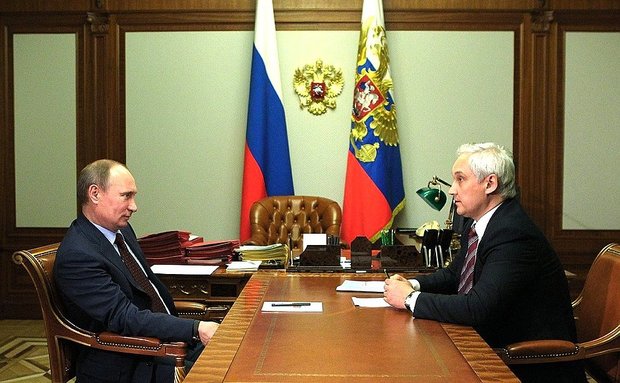‘Is it time to rush to buy dollars and euros?': Russians are frightened of new devaluation
First person’s verbal intervention and a 5% reduction of the ruble because of holiday season
A ghost of the next devaluation has been terrifying the Russian citizens for a week. Currency rates grow every day. A significant devaluation seems to have started. Is it time to rush to buy the going up dollars and euro? The economic reviewer of Realnoe Vremya Albert Bikbov thinks there is no point getting into a panic. Fundamental factors are on the side of the strong ruble at the moment.
Devaluation of the ruble is not only evil
It all began when Vladimir Putin drew attention to the risks of the excessive ruble strengthening at a meeting with the PM Dmitry Medvedev:
'The ruble is getting stronger, in spite of a well-known volatility in the commodity market. This is why, undoubtedly, we should think what and how we are going to do in the short run because of these factors'.
In pursuit of this unexpected statement, Russian President's Assistant Andrey Belousov also publicly added fuel to the fire:
'From my point of view, the ruble is starting to strengthen today. It is bad because it reduced budgetary incomes and aggravates problems in the budget. It decreases the competitiveness of the Russian industry and agriculture and depreciates the tasks on import substitution. Indeed, we are witnessing a tendency of a decreasing export growth'.
These verbal interventions were enough for a 5% devaluation of the ruble in the stock market within a week. So, a level of 66,5 rubles per dollar was reached in trading.
Terrifying forecast
Such a rapid devaluation of the ruble made a number of economists draw conclusions to the long-term devaluation. So, on 25 July, the former deputy chairman of Central Bank and senior fellow in Bookings Institution Sergey Aleksashenko forecasted that the Russian ruble might be devaluing by 10-15% in the short run.
What does a margin of 71-75 rubles per dollar or return to the February 2016 results when the Russian economy experienced a big shock given by the January extreme fall of oil prices mean?
How does such an informed economist explain his forecast?
- Reason No. 1: seasonal factor (August-September is a traditional season of an increased demand for the currency)
- Reason No. 2: cheapening oil. In July, it became cheaper by about 11% and has reached $44,57 per barrel in the recent trading.
- Reason No. 3. Putin and Belousov's verbal interventions in itself. They have their own view on the curative powers of the devaluation for the Russian industry.
Ruble has a solid foundation
In our opinion, we should not be afraid of the further devaluation. Yes, the seasonal factor, the interventions supported the growing dollar, but the cheapening oil in July (in relation to modest sizes compared to the extreme fall at the beginning of the year) can't influence the devaluation. Our paper wrote about the independence of the key currency rates from oil prices in Russia.
The mechanism of inflation targeting, which started to function at the end of 2014 and included a floating mode of free currency rate formation, did its job – the economy adapted to the fall of oil prices without any automatic rise in the currency rate. This adaptation took place 10 months later in 2015 after a complete switch to the model of inflation targeting. Now completely different factors influence the currency rate: reduced external turnover, decreased level of external debt payment and diminished capital outflow. Indeed, if oil prices fell by 11%, the dollar is to add the same amount. But it did not happen. Its growth was less (5%) due to other factors.
The state of the balance of payments of the Russian Federation is one of the key components of the currency rate particularly concerning the current account balance (mainly the difference between export and import) and capital account (capital export).
According to Bank of Russia, the current positive account balance of the Russian Federation in the first quarter of 2016 was $15,9bn. In other words, roughly saying, export surpasses import, that is to say, the currency has arrived in the country.
As Bank of Russia stated, net capital export of the private sector in the first quarter of 2016 reduced almost fivefold, compared to the analogous period in 2015 – to $10,5bn. A sudden reduction of the intensity of external debt payment was accompanied by a revival of demand for external assets from other sectors.
Suffice it to say that the capital outflow from Russia was $153bn in 2014, it reduced in 2015 but still was very big $57bn in order to estimate the sudden fall of the capital export. So, such a low current level of the capital export at $10,5bn has a favourable impact on the growth of the ruble rate, compared to other currencies.

The situation of external debt payment is very pleasant. As Bank of Russia estimated taking into account the amendments on the intra-group financing, payments of the largest companies in the third and fourth quarters of 2016 will be even and make up about $2,3bn on average.
As you can see, there are no basic reasons for the dollar growth. A seasonal burst is the cause (mainly connected with holidays) as well as the verbal interventions of the leader of the country. So, if oil prices do not continue falling, the currency won't be expensive against the ruble. Will the small July devaluation that has been maintaining at 5% for three weeks have an impact? It is unlikely to happen. Inflation traditionally goes down in August and at the beginning of September. This is why, there is no point worrying about it.
In a word, the ghost of the rapid devaluation, which has appeared in July, will remain an ephemeral ghost.